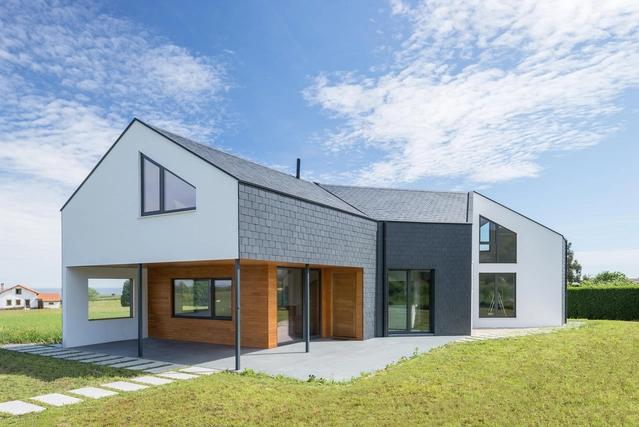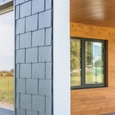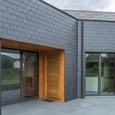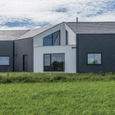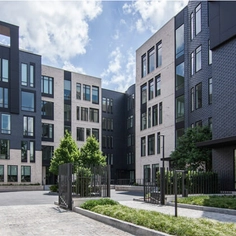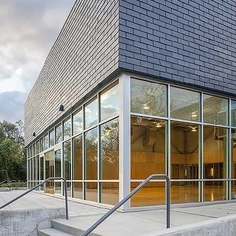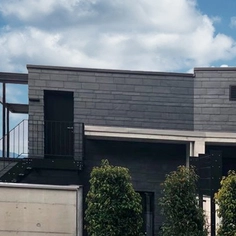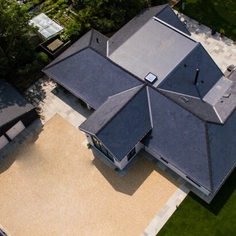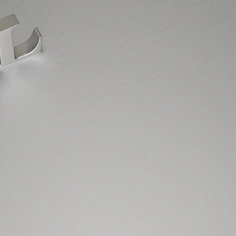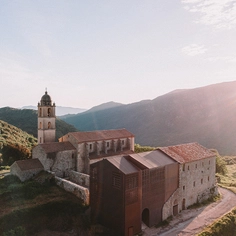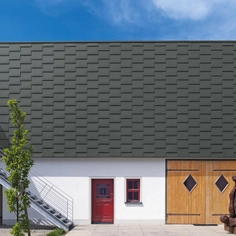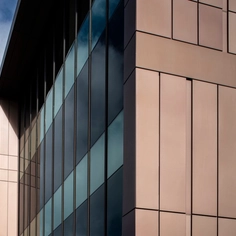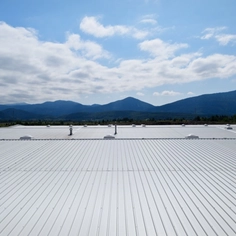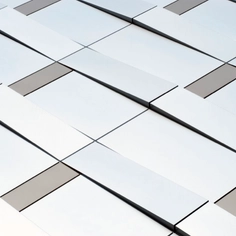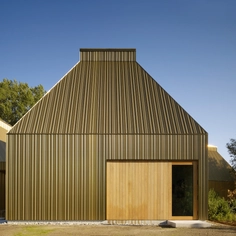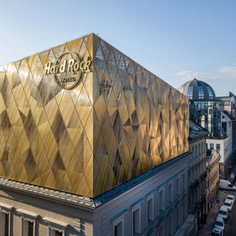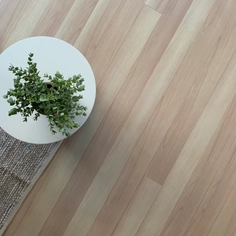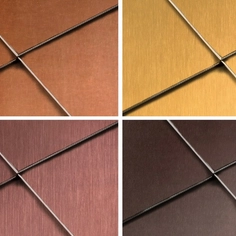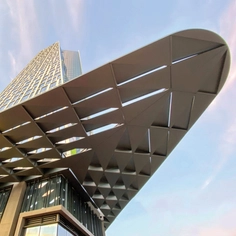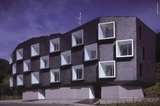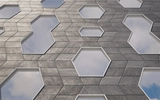The architecture studio Duque y Zamora specialized in Passivhaus standard, finished this project aiming to minimize the use of conventional heating and cooling systems, make the most of light and optimize energy efficiency. Their main objective was to build a house combining the highest comfort and an almost zero energy consumption, taking as reference the Passivhaus Standard.
In order to comply with the near net-zero requirements, it was essential to make a previous analysis of the climatic conditions. For this family home located in Asturias (Spain) there were three main elements to take into account:
- The sunlight (the energy needed to heat the home is given naturally by solar radiation).
- The wind (it causes energy losses).
- The views towards the sea, that were absolutely essential for the owners.
Natural Slate for a Bioclimatic House
When designing a bioclimatic house like this one, a certified material such as natural slate is an excellent option. Its strength, durability and sustainability have made it an ideal solution for this Passive House roofing and cladding. The house has an elongated rectangular floor plan with a gable roof. In order to optimize the energy efficiency, a natural slate façade has been installed, so it avoids the direct impact of the wind directly on the house.
In total, for the façade 148.65m2 of CUPA 17 natural slates were installed (40 × 25 cm) and 139.71 m2 of the same material in 56 × 25 format a for the roof. CUPA 17 is a non-carbonated, dark grey slate formed by tectonic compression, with thin laminations and a riven surface. When used as rainscreen cladding system, it gives numerous advantages in terms of thermal and acoustic properties.


